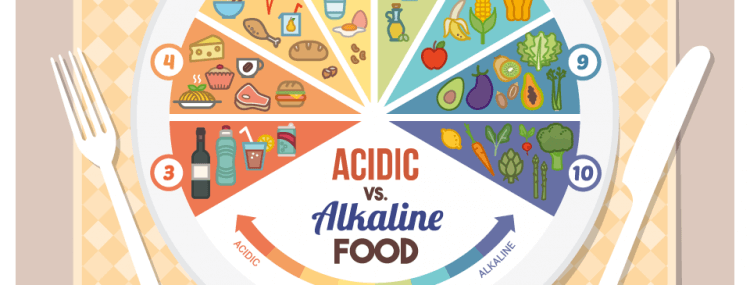
How to get the balance right with acid and alkaline foods
Oranges and lemons…are believed to increase acid levels in the body! Some other foods believed to be less so…
So what defines the acidity or alkalinity of foods? Acidity or alkalinity is expressed in terms of “pH” value which is a measure of the hydrogen and hydroxyl ion concentration in foods. The scale for the pH measurement ranges from 0 to 14, and 0 represents the highest acidic level and 14 represents the highest alkaline level. Any value above 7 indicates alkaline pH. Our blood maintains a strict pH level of 7.4 which means it is slightly alkaline.
This is the basis for the many advocates of an “alkalizing diet” being better than acidic diet.
When food is digested, a residue or “ash” is left in our body. This ash residue can be neutral, acidic, or alkaline. Alkaline foods have higher amounts of, potassium, calcium, magnesium, and iron, and will leave an alkaline ash, while acidic foods may contain higher amounts of sulphur, phosphorus, and chlorine and leave acid ash.
If there are too many “acidic” ash foods it leads to conditions such as kidney stones, hyperuricemia or “gout” wherein the body has high levels of an acid called uric acid leading to joint pain, inflammation and increased risk of stone formation.
Many other ills can also be a result of too much acid in the blood including:
- Osteoporosis and decalcification : that is leaching of minerals and calcium from bone, leading to poor bone strength and increased risk of fractures
- Arteriosclerosis and coronary disease
- Greater risk of arthritis
- Greater risk of kidney stones
- Higher cancer risk
An easy key to knowing your acidic and alkaline foods would be to remember that most plant based foods are alkalizing (except pulses and wheat bran) and most non vegetarian foods are acidic, except milk and milk products.
Here is a list of some acidic and alkaline foods!
The top 6 acidic foods
All processed foods and refined cereals
Fruits: Cranberries, blueberries, plums
Grains: Whole wheat bran, oats, white rice
Pulses: All dals and whole pulses
Vegetables: Green peas,cauliflower,potatoes
Dairy products: Cheese
Non veg: Egg, poultry, fish, meat, seafood
Top 6 alkalizing foods:
Fruits: All except those listed under acidic foods
Grains: millets (bajra, ragi, foxtail, kodo, jowar)
Vegetables: All except those listed under acidic foods
Dairy products: Milk, curds, paneer
Nuts: Almonds, chestnuts
Some foods fall under slightly acidic category, namely, rice, brown rice, other nuts including walnuts, peanuts. Even though pulses and some vegetables are listed under acidic foods, they are not acidifying to the same extent as non vegetarian or animal based products.
A good balance is to have about 80 % of foods that are alkalizing, and 20 % from acidic or slightly acidic. Drinking plenty of water, meditation, exercise and maintaining ideal body weight also go a long way towards preventing consequences of high levels of acidity in the body.
Calorie Care brings a delicious range of healthy foods that can be tailor made for your requirements, be it low calorie, or controlled salt and fats! Design your delightful plate by visiting www.caloriecare.com today!



